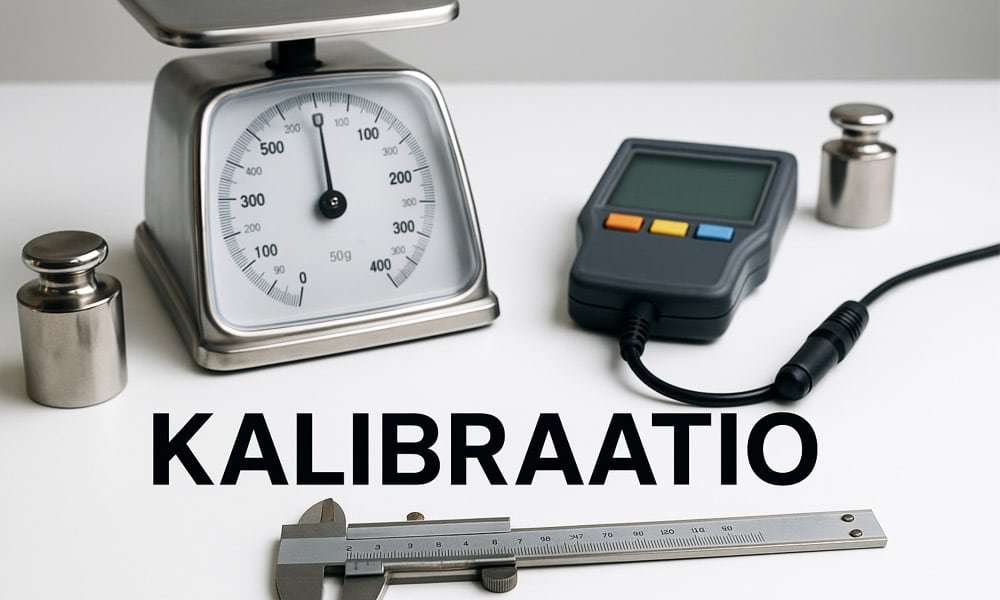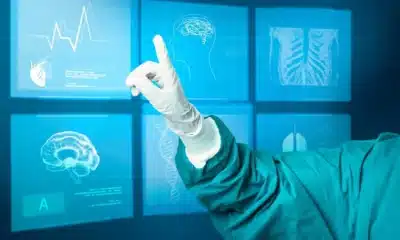Guide
What Is Kalibraatio and Why Should You Care?
Published
5 months agoon
By
Archie
Have you ever weighed ingredients on a kitchen scale and wondered if it was really correct? Or maybe checked your body temperature with a thermometer and trusted the number on the screen without question? What if those numbers were wrong? This is where kalibraatio comes in.
Kalibraatio (the Finnish word for calibration) is something most of us never think about, but we use its results every single day. It’s the quiet helper behind every accurate tool and machine. From medical devices to airplanes, kalibraatio makes sure things work the way they should.
In this article, we’ll explore what kalibraatio really means, why it matters, where it’s used, and how it affects our everyday lives. Don’t worry—everything will be explained in simple, friendly words.
What Does Kalibraatio Mean?
Kalibraatio means checking a tool or machine to see if it gives the right results. If it doesn’t, we fix it. This way, we know that what the tool shows is correct, or at least very close to correct.
Imagine using a thermometer that always shows 2 degrees too high. That could be a big problem in a hospital. With kalibraatio, we compare that thermometer to a trusted, known one. If it’s off, we adjust it.
In simple words, kalibraatio is the process of making sure measuring tools are doing their job right.
Why Is Kalibraatio So Important?
We often don’t notice it, but calibration plays a huge role in keeping us safe and making things work.
Think about this:
-
A doctor uses a blood pressure machine to check if a patient is okay.
-
A pilot uses instruments to fly an airplane safely through clouds.
-
A food factory checks temperatures to make sure food is cooked properly.
If those tools are not calibrated, the results could be wrong. And when results are wrong, people can get hurt, products can be ruined, and money can be lost.
That’s why kalibraatio isn’t just for science labs. It’s for everyone, everywhere.
How Does Kalibraatio Work?
The process of kalibraatio is usually simple but very careful. It always follows a few important steps.
First, we prepare the device and write down how it currently works. Then, we compare it to a trusted standard—a device we already know is accurate. If the readings are different, the device might need adjusting.
Sometimes, no fixing is needed. We just check that it’s still working well and mark it as “calibrated.”
At the end, the whole process is recorded on paper (or digitally). This is called a calibration certificate. It proves that the tool was tested and can be trusted.
It’s like taking your car to a mechanic. You don’t just want it to run—you want to know it’s running right.
Where Do We Use Kalibraatio?
You might be surprised to learn how many places use kalibraatio every day. It’s not just in labs or big factories.
In hospitals, it helps keep medical machines safe and accurate. In airplanes, it keeps flight sensors and gauges working. In factories, it makes sure machines cut, shape, and build things correctly.
But that’s not all.
It’s also used in energy companies to measure gas and electricity. It’s used in food plants to check things like temperature and pH. It’s even used in weather stations to track wind and rainfall.
In short, kalibraatio is used anywhere that accuracy matters. And in today’s world, accuracy matters almost everywhere.
Kalibraatio in Your Daily Life
Even at home, kalibraatio touches your life in small ways.
Your smartwatch counts your steps. But how does it know what a step is? It uses a tiny sensor that was calibrated before it reached you.
Your car warns you if your tires are low on air. That warning only works if the tire pressure sensors were calibrated correctly.
Even your phone’s compass, your microwave, or your fitness scale—none of them would work right without kalibraatio behind the scenes.
It may sound technical, but it’s very real. Kalibraatio helps you cook better, stay safer, and even navigate your way home.
What Tools and Devices Need Calibration?
A lot of tools need kalibraatio—some you use every day, and others you may never see.
Let’s take a look at just a few examples:
-
Medical tools: Thermometers, blood pressure machines, heart monitors
-
Vehicles: Speedometers, fuel meters, tire sensors
-
Home tools: Kitchen scales, thermostats, fitness trackers
-
Factory tools: CNC machines, micrometers, torque wrenches
-
Science tools: Lab balances, gas sensors, microscopes
Anything that measures something probably needs to be calibrated. If it gives a number, it should be tested regularly to make sure that number is right.
How Often Should Devices Be Calibrated?
This is a very common question—and a very important one too.
The truth is, there’s no single rule for how often you should do kalibraatio. It depends on a few things. First, how often the device is used. A tool that runs every day might need calibration every month. But a tool used once a week might only need it once a year.
Second, it depends on where the device is used. Tools in hot, dusty, or wet places might go out of tune faster. Also, some industries (like hospitals or labs) have rules about how often certain tools must be calibrated.
So, it’s always a good idea to follow the maker’s advice or your industry’s guidelines. This keeps everything running safely and correctly.
Who Performs Kalibraatio?
You might be wondering, can you do kalibraatio by yourself?
The answer is—sometimes yes, but often no.
For small tools like kitchen scales, a simple reset or home calibration might work fine. But for bigger, more serious devices—like hospital equipment or factory machines—you need trained experts. These experts work in special places called calibration labs.
These labs use very accurate tools to compare your device to a trusted standard. Everything is recorded. This way, there’s proof the calibration was done right.
In 2025, many companies will also offer on-site calibration, meaning the expert comes to you. This saves time and helps businesses stay on track.
What Is a Calibration Certificate?
After a device is calibrated, the expert gives you a paper or digital file called a calibration certificate. This is a very important document.
It shows:
-
What tool was calibrated
-
The results of the test
-
The name of the person or lab that did it
-
The date, and when the next calibration is due
-
The type of standard used for comparison
Why is this important? Because it proves your device is working correctly. In audits or inspections, this certificate shows that you’re serious about safety and quality.
For example, a food factory can’t ship products unless all machines are calibrated and have valid certificates.
Challenges in Kalibraatio
Even though kalibraatio is super helpful, it does have some challenges.
One big issue is the environment. If you try to calibrate a tool in a very hot or humid room, the results might not be correct. That’s why many labs control temperature and humidity very carefully.
Another problem is cost. Some calibration tools and services are expensive. Small businesses might skip it to save money, but that can be risky in the long run.
There’s also the problem of human error. If someone forgets to record the right number, or skips a step, the whole calibration might be wrong.
That’s why trained staff and good systems are so important.
Digital and Automatic Calibration in 2025
The good news? Technology is making kalibraatio easier than ever.
Many new tools can now calibrate themselves. For example, a high-end digital scale might adjust itself each time you turn it on. Some machines even send their data to the cloud, where software checks and corrects them in real time.
There’s also remote calibration. This means you don’t need to send the device to a lab. Instead, experts connect through the internet and help fix the tool from far away.
These smart methods save time, reduce mistakes, and make calibration faster. In the world of smart homes, smart factories, and smart cities, this is the future.
What’s Next for Kalibraatio?
Looking ahead, kalibraatio is only becoming more important.
As machines get smarter, we need even more accurate measurements. Imagine a robot surgeon or a self-driving car—would you trust them without proper calibration?
In 2025 and beyond, we may also see AI helping with kalibraatio. These systems can learn when a device might go out of tune, before it happens. This helps prevent errors early.
Also, new tools will be designed with eco-friendly calibration in mind. Less waste, less energy, more smart thinking.
Bottom-Line
So, what have we learned?
Kalibraatio may sound like a technical word, but it touches our lives in so many ways. It keeps us safe, helps machines work well, and makes sure we can trust what we see and measure.
From the scale in your kitchen to the planes in the sky, from the hospital room to the weather forecast—it’s all powered by accurate tools. And those tools stay accurate thanks to kalibraatio.
We might not notice it. We might not talk about it. But without it, our world would be full of guesswork and mistakes.
Kalibraatio keeps everything in tune, on track, and working right.
And that’s something worth caring about.
(FAQs)
Can a small calibration error cause serious harm?
Yes. Even a tiny mistake in calibration can lead to wrong medical results, faulty airplane readings, or unsafe food. In some industries, that can mean injury or even death.
Is your smartwatch lying to you?
It might be. If the sensors in your fitness tracker or smartwatch aren’t calibrated correctly, your steps, heart rate, or sleep data could be totally wrong.
Do devices lose accuracy over time?
Yes. Every tool or machine that measures something slowly drifts out of accuracy, even if you use it perfectly. That’s why regular kalibraatio is a must.
Can calibration be done over the internet?
Surprisingly, yes! In 2025, many devices support remote or cloud-based calibration, so experts can adjust tools without touching them physically.
Are cheap devices often uncalibrated?
Yes. Many low-cost tools (like kitchen scales or thermometers) skip proper calibration to save money, which means you could be using them wrong every day.
You may like


Benefits of Partnering with an Expert Foundry

Choosing the Right Supported Independent Living Option for Your Needs

Why Companies Worldwide Are Hiring Power BI Developers

Experience Pure Android Gameplay with MuMuPlayer Emulator

A Guide To Solar PV For Homeowners

How to Convert a Historic Building into a Hotel: a 2025 Guide

How You Can Integrate AI into Your Small Business For Faster Growth

File Recovery on Android: Myths vs. Facts

Cooler, Safer, Clearer: Why Quality Window Tint Is a Smart Upgrade in 2025

How Medium-Sized Businesses Actually Handle Their Books

Carol Kirkwood’s Journey: Her Real Age, Husband, Career, and More

Revolutionizing Healthcare: The Emergence of AI-Driven Analytics

How Machine Learning and AI are Redefining the Future?

Aliza Barber: Meet Lance Barber’s Wife, Age, Life, Profile, Career and Net Worth

Evelyn Melendez: Jordan Knight’s Wife Bio, Marriage, Family, Career and Net Worth

Ilan Tobianah Biography: Family, Marriage, Lifestyle, Career and Net Worth

Who was Alice Marrow? Everything to Know About Ice-T’s and His Mother

King Von’s Autopsy Report: The Truth Behind the Tragic Death

Meet Otelia Cox: The Supportive Wife of Tony Cox – A True Fairy Tale Romance

Tea Leoni and Tim Daly Split – A Closer Look at Their Relationship and Breakup

Benefits of Partnering with an Expert Foundry

Choosing the Right Supported Independent Living Option for Your Needs

Why Companies Worldwide Are Hiring Power BI Developers

Experience Pure Android Gameplay with MuMuPlayer Emulator

A Guide To Solar PV For Homeowners

How to Convert a Historic Building into a Hotel: a 2025 Guide

How You Can Integrate AI into Your Small Business For Faster Growth

File Recovery on Android: Myths vs. Facts

Cooler, Safer, Clearer: Why Quality Window Tint Is a Smart Upgrade in 2025

How Medium-Sized Businesses Actually Handle Their Books
Category
Trending
-

 News3 months ago
News3 months agoCarol Kirkwood’s Journey: Her Real Age, Husband, Career, and More
-

 Health2 years ago
Health2 years agoRevolutionizing Healthcare: The Emergence of AI-Driven Analytics
-

 Technology2 years ago
Technology2 years agoHow Machine Learning and AI are Redefining the Future?
-

 Celebrity2 years ago
Celebrity2 years agoAliza Barber: Meet Lance Barber’s Wife, Age, Life, Profile, Career and Net Worth
